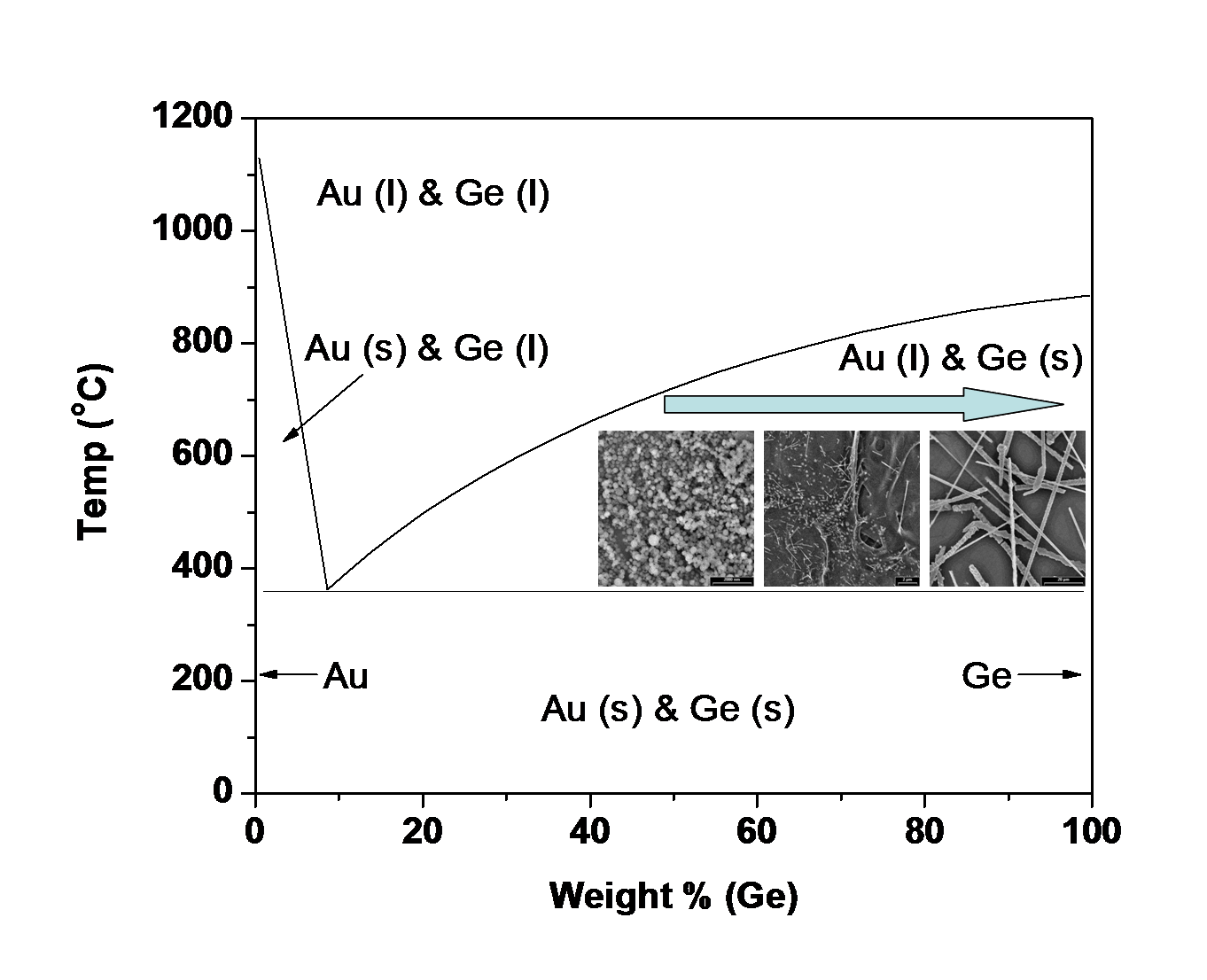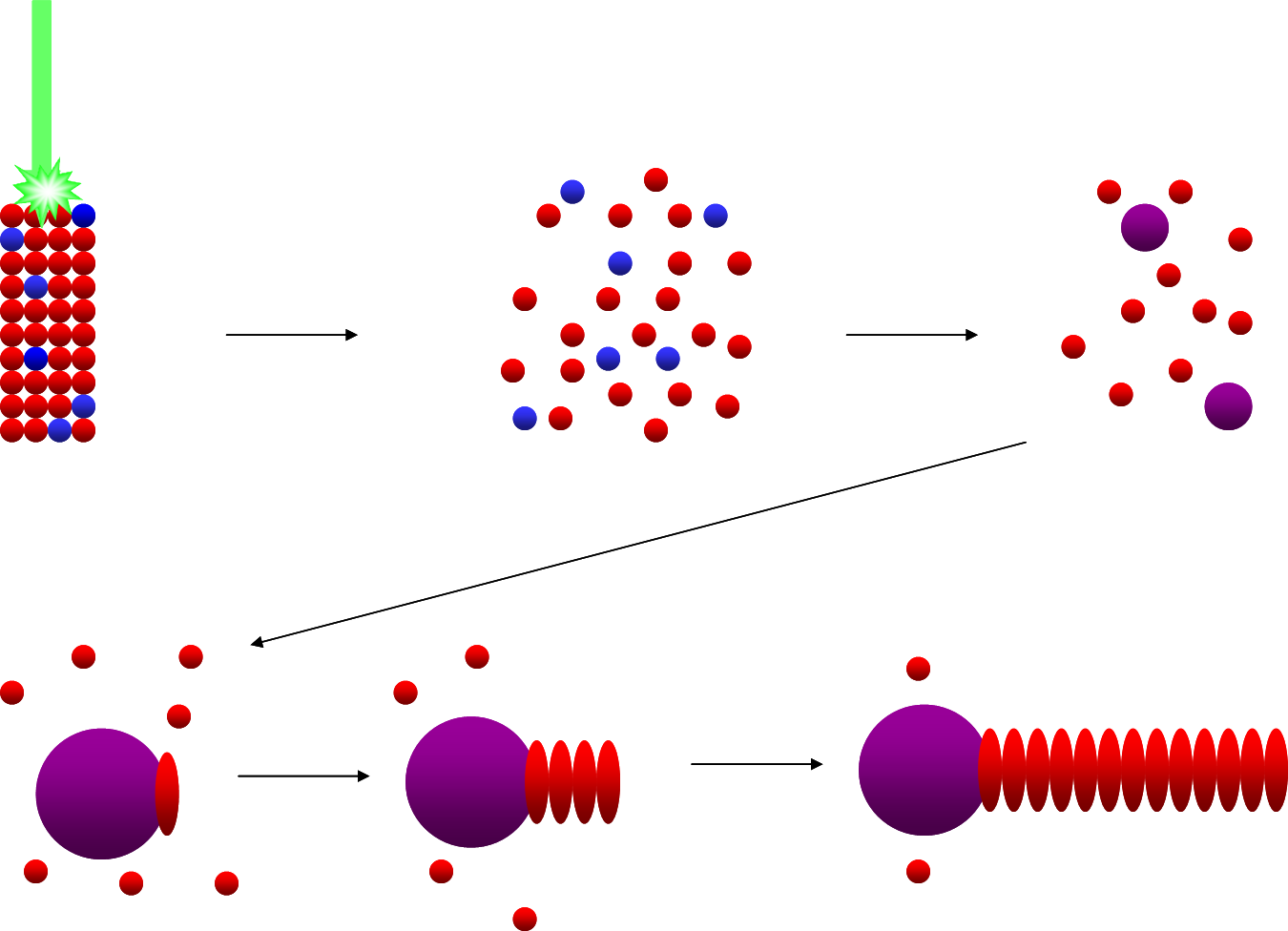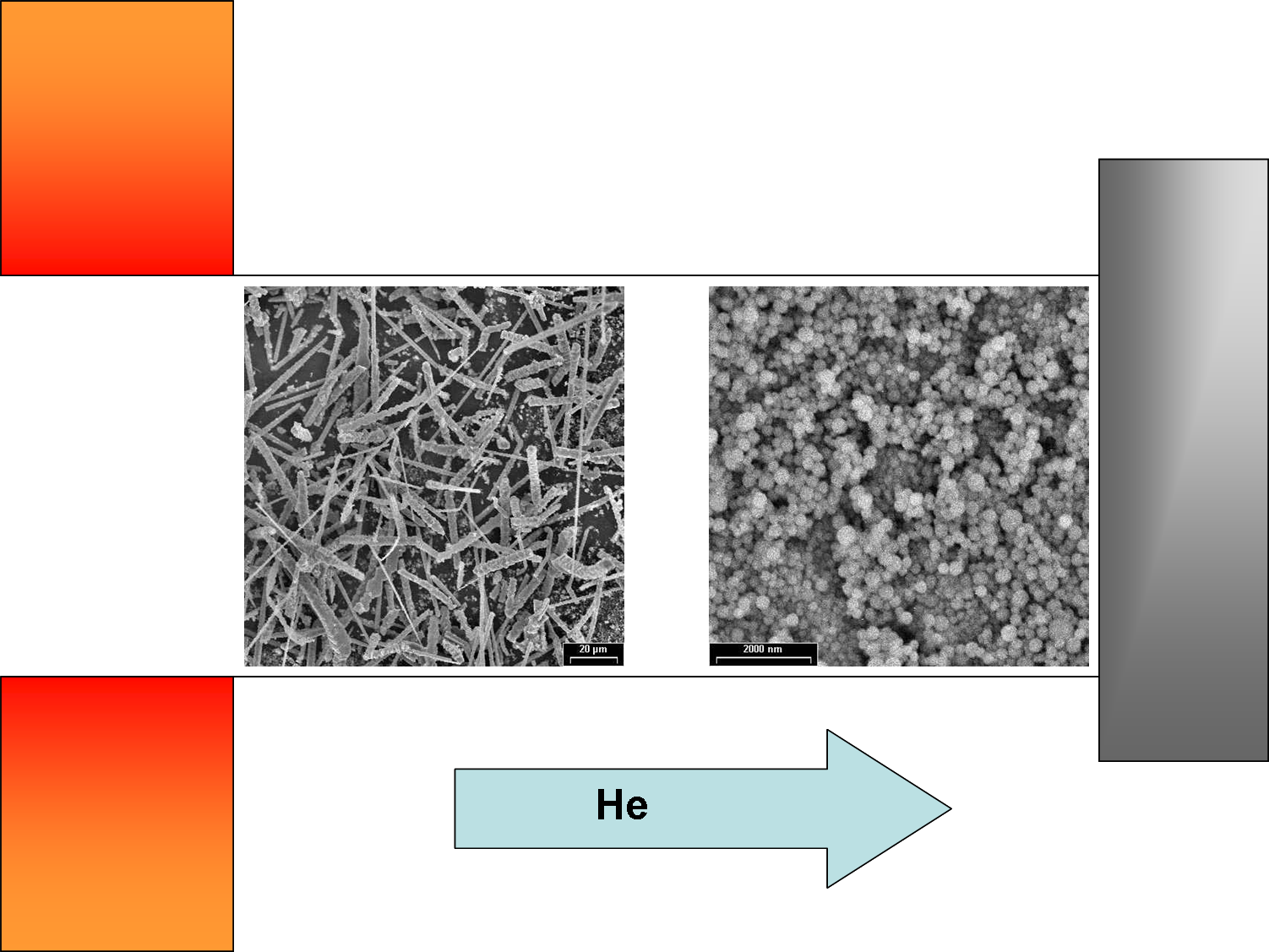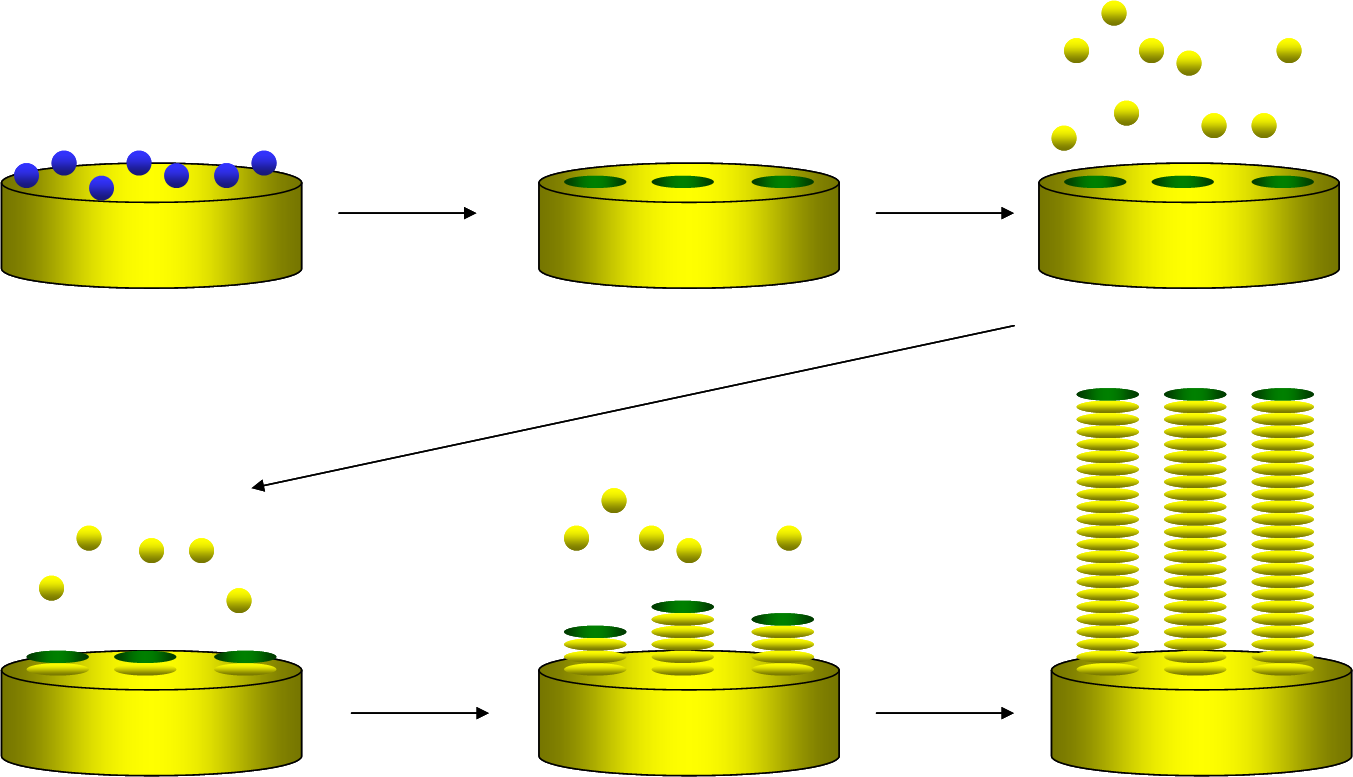In a typical experiment an Nd-YAG laser is used to ablate a target containing the metal catalyst and building material inside a heated tube furnace.
In a typical experiment an Nd-YAG laser is used to ablate a target containing the metal catalyst and building material inside a heated tube furnace.

The composition of the target is crucial and determined by an equilibrium phase diagram. Once the appropriate amounts of the respective powders are weighed out the sample is then pressed.

Ablation of the target creates a supersaturated vapor which undergoes nucleation to form small clusters. The clusters remain in the liquid phase while in the hot zone of the furnace.

Wire formation is possible when the cluster becomes saturated with the building material resulting in precipitation of the wire. Wire growth is terminated when the cluster leaves the hot zone.
Three factors that effect the growth of the wires are temperature, flow rate and pressure. The temperature of the furnace needs to be high enough to ensure that the cluster remains in a liquid state which again is determined from the equilibrium phase diagram. Having a slow flow rate keeps the cluster in the hot zone for longer times resulting in the formation of longer wires. The pressure within the tube is related to the size of the cluster formed, ultimately affecting the diameter of the resulting wire.

Alternative method for growing wires on a support.
Last Modified On 07/25/05
This page does not reflect an official position of Virginia Commonwealth University